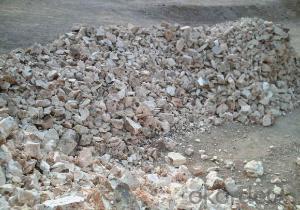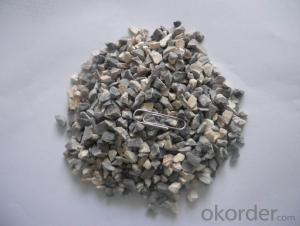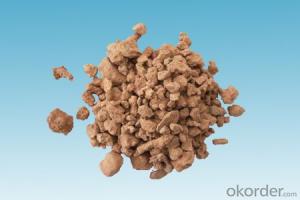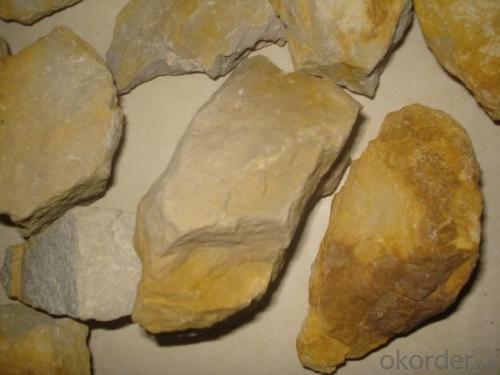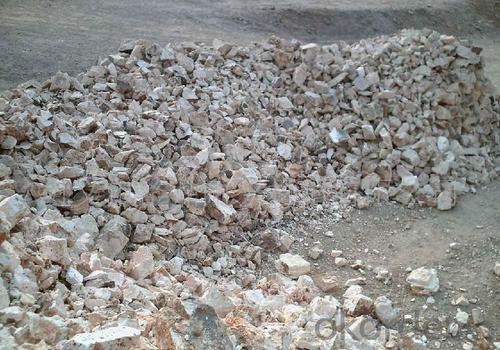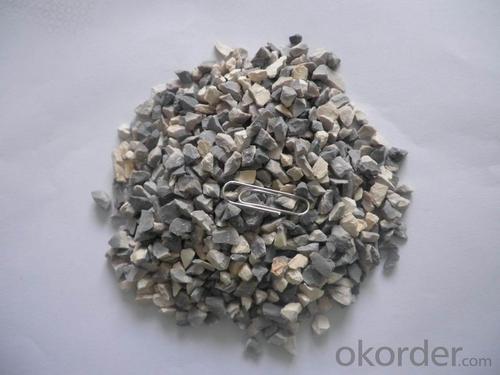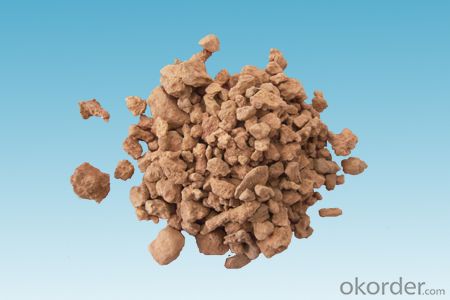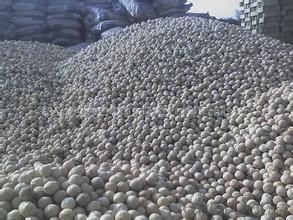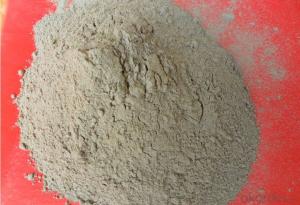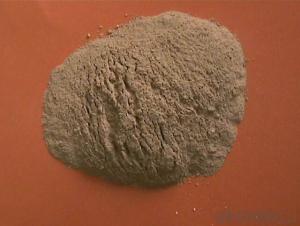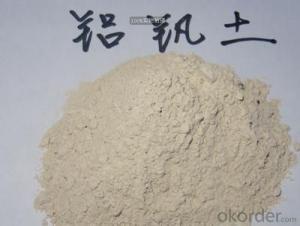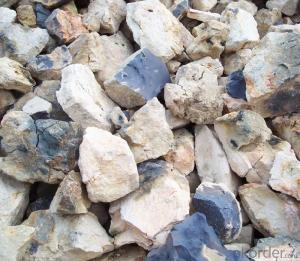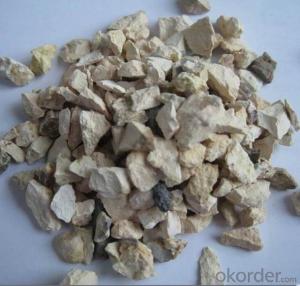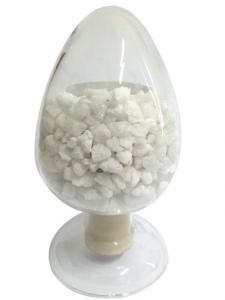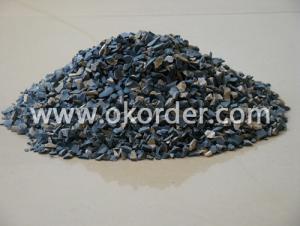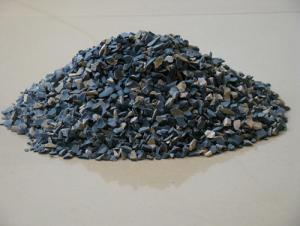Raw Materials for Refractory:Low Impurity High Alumina Calcined Bauxite in Bulk of CNBM in China
- Loading Port:
- Tianjin
- Payment Terms:
- TT or LC
- Min Order Qty:
- 11 m.t
- Supply Capability:
- 11111111 m.t/month
OKorder Service Pledge
OKorder Financial Service
You Might Also Like
Low Impurity High Alumina Calcined Bauxite in Bulk of CNBM in China
1.Structure of Calcined Bauxite Description
Bauxite (aluminous soil; Bauxite) is also called the alumina or bauxite, main ingredients are alumina, hydrated alumina containing impurities, is an earthy mineral. White or gray, brown and yellow or light red by iron. From 4 to 3.9 g/cm3 density, hardness, 1 ~ 3 is not transparent, very brittle. Very difficult to melt. Insoluble in water, soluble in sulfuric acid, sodium hydroxide solution. Mainly used for aluminium, refractory material.
2.Main Features of the Calcined Bauxite
Calcined bauxite is one of the principal ore of aluminum. Calcined bauxite contains hydrous aluminum oxides and aluminum
hydroxides, formed through the laterization of aluminous rocks in tropical and subtropical areas .Calcined bauxite is obtained by calcining (heating)superior grade bauxite at high temperature (from 85OC to 1600C) .This removes moisture there.By increasing the alumina content,compared to an alumina content of about 57%to 58% in raw bauxite, calcined bauxite has an alumina content of 84%to88%.The heating is carried out in rotary kilns.
3.Main usage of the Calcined Bauxite
(1) aluminium industry. Used in national defense, aerospace, automotive, electronics, chemical industry, daily necessities, etc.
(2) precision casting. Alumina clinker made after the mould precision casting processed into fine powder. Used in military industry, aerospace, communications, instrumentation, machinery and medical equipment department.
(3) is used for refractory products. High bauxite clinker refractoriness is as high as 1780, chemical stability strong, and good physical properties.
(4) aluminum silicate refractory fiber. With light weight, high temperature resistance, good thermal stability, low thermal conductivity, heat capacity is small and the advantages of resistance to mechanical shock. Used in iron and steel, nonferrous metallurgy, electronics, petroleum, chemical, aerospace, atomic energy, defense and other industries.
(5) in magnesia and bauxite clinker as raw materials, add the appropriate binder, used for pouring ladle whole ladle lining has particularly good effects.
(6) manufacture alumina cement, abrasive materials, ceramic industry and chemical industry can be aluminum of various compound.
4. Calcined Bauxite Images
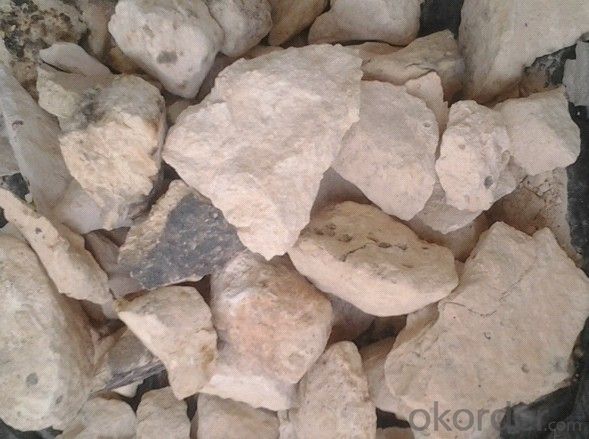
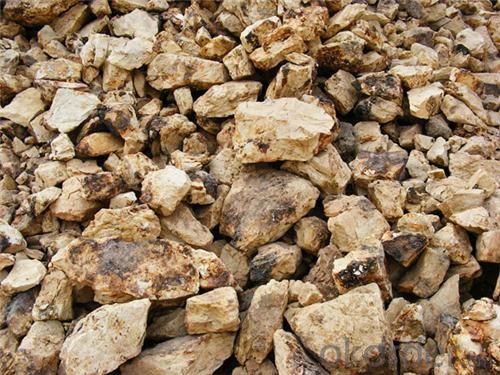
5. Calcined Bauxite Specification
| Place of Origin: | China (Mainland) | Shape: | Powder | Material: | Bauxite ore |
| SiO2 Content (%): | -- | Al2O3 Content (%): | 87.5% | MgO Content (%): | -- |
| CaO Content (%): | -- | Refractoriness (Degree): | Common (1580°< Refractoriness< 1770°) | CrO Content (%): | -- |
| SiC Content (%): | -- | Model Number: | HQB | Brand Name: | CNBM |
| Name: | Low Impurity High alumina calcined bauxite in bulk | Company: | CNBM | Type: | R&D- Production-Sales/Manufacture |
| Experience: | 51years | Certification: | ISO,CNAB,IAF | Main markets: | India,South Korea,Denmark, Russia, Europe, the United States |
| Fe2O3: | ≤1.6 | K2O: | ≤0.15 | Na2O: | ≤0.12 |
| Bulk Density: | ≥3.25g/cm3 |
♥ Research of application basis, new technical process and new technology, development of new product, and technical consultation.
♥ Optimum solution and product supply of refractories for high temperature industries, such as iron&steel, non-ferrous, petrochemical and building materials.
♥ Engineering design, contract and consult for refractories, and civil architecture design.
♥ Research,development, manufacture and sale of superhard materials.
♥ R&D, manufacture and sale of special packing materials for export.
♥ Inspection,supervision and arbitration of refractories.
♥ Consultation and services in refractories information.
♥ Training and cultivation of high-level talents in refractories profession.
6.FAQ of Calcined Bauxite
1). Q: Are you a factory or trading company?
A: We are a factory.
2). Q: Where is your factory located? How can I visit there?
A: Our factory is located in ShanXi, HeNan, China. You are warmly welcomed to visit us!
3). Q: How can I get some samples?
A: Please connect me for samples
4). Q: Can the price be cheaper?
A: Of course, you will be offered a good discount for big amount.
- Q: Who knows about the fire endurance of A grade fireproofing glass doors?
- The fire endurance of A grade fireproofing glass doors should be no less than 3 hours. A grade fireproofing glass doors use common glass of 6 mm. The shock resistance of float glass is about less than 5 min, and that of toughened glass is about 15 to 30 min. Fireproofing glass is classified in accordance with fire rating, the fire endurance of which is usually from 30 to120min, and that of the most common fireproofing glass is 60 to 90min, but now the market is a mixed bag, the so-called fireproofing glass is generally fake ultra-strong tempered glass. Therefore, you should buy the genuine glass with formal certificates, or you will bring yourself great inconvenience, and even more serious consequences.
- Q: who knows the fire resistant levels of fireproofing glass?
- Fireproofing glass is a kind of special glass which can keep its integrity and thermal insulation performance in regular insulating refractory trials. and it can be divided into three classes according to its fire resistance: Class A, it's a kind of fireproofing glass that can satisfy the requirements of refractory integrity, refractory and thermal insulation at the same time. This kind of glass has the properiyies of transmittance, fireproofing ( smoke insulation, fireproofing, and keeping out thermal radiation), sound insulation, shock resistance, and it's suitable for steel and wooden fire door of building decoration, windows, varnishing, partition walldaylighting?roof,ceiling?screen,perspective floor and other construction components demading for transparency and fireproofing. Class B, it's a kind of fireproofing glass that can satisfy the requirements of refractory integrity, refractory and thermal insulation at the same time. Such kind of fireproofing glasses mostly are composite fireproofing glasses and has characteristics of transmittance,fireproofing and smoke insulation. Class C, it's a kind of fireproofing glass that only satisfies the requirements of refractory integrity. This kind of glass has characteristics of transmittance, fireproofing, smoke insulation and high strength,etc. It's suitable for fireproofing glass partition wall, fire Windows, outside curtain wall and other places without insulation requirements. Classify from the structure,fireproofing glass can be divided into composite fireproofing glass and monolithic fireproofing glass.
- Q: Why the refractories should be waterproof and wetproof
- The binding agent of many raw materials is water-soluble. It will be useless when meeting water.
- Q: What are the applications of refractory busway?
- Fire-resistant busway has excellent insulation property, and it can not only be used continuously in a normal environment, but also be used continuously when catching fire for more than one hour. It can be used in high buildings and important facilities in replace of fire-resistant cables to transmit and distribute electricity.
- Q: Does anyone know what kind of light fireproof materials are there?
- 二, 1, Gypsum plaster board With the building plaster as main raw material, gypsum plaster board is a kind of processed plate made by a special board for protective with an addition of additives and fibers as board core. Gypsum plaster board is characterized by light weight, sound insulation, heat insulation, strong processing performance and simple construction method. 2, Gypsum block Gypsum block is a kind of lightweight building gypsum product which is mainly made of building gypsum, and by adding water, stirring, casting and drying. During the process, , the fiber reinforced materials or light aggregates are allowed in, and the foaming agent can also be added. It has many advantages, such as sound insulation and fire prevention, convenient construction and so on. It is a kind of new and healthy wall material which produces low carbon, enhances environmental protection, and caters to the the times. 3, Fly ash brick is a new type of wall material, and bulk density is one of the main technical indexes. The weight of bulk density can be controlled according to the need of construction and adjustment of technical formula. The dry bulk density of the fly ash brick is about 1540 to 1640 kg / m 3, slightly lighter than the clay brick (1601800 kg /m 3). The flexural and compressive strength of fly ash brick is mainly determined by the production process, the formula and the hydrothermal synthesis reaction mode as well as the need of construction. According to the standards of architectural material industry (JC239 - 2001) released by People's Republic of China, the average value of the flexural strength is 2.5 ~ 6.2Mpa, compressive strength is between 10 ~ 30Mpa. I hope this will be helpful to you
- Q: I am a manufacturer of refractory materials. I would like to receive some orders from abroad. I would like to know what foreign trade companies in Dalian place foreign orders abroad
- You don't give a cent to this question, no one will answer it
- Q: What is the material composition of the new fire-resistant coating?
- New fire-resistant coating generally consists of base material, dispersion media, flame retardants, fillers, additives (plasticizers, stabilizers, waterproofing agents, moisture, etc.). (1) Base material is the basis of the composition of the coating, and it is the main film-forming substance, playing a decisive role in coating performance . For fire-resistant coating, its base material must be capable of matching with the flame retardant to constitute an organic fireproofing system. The base material commonly employed at home and abroad includes inorganic and organic film-forming material. Inorganic film-forming materials include silicate. Si03, K2 Si03Na2 Si03), silica and phosphate [Al. (HPO.). ] ect. There are a wide range of organic film-forming substance, usually flame retardent organic synthetic resins, such as phenolic resins, halogenated alkyd resins, polyester, halogenated olefin resins (such as vinyl chloride resin), amino resin (melamine resin, urea resin, etc. ), tar-based resins, furan resins, heterocyclic resins (e.g., polyamide-imide, polyimide, etc.), organic elements resins (e.g. silicone resin), rubber (halogenated rubber such as chlorinated natural rubber) and so on. There are numerous latex taking water as solvent. www.hc3600.
- Q: What are fireproofing materials?
- Plants often use the fireproof sealing material with steel structures without much modification. All the panels that meet the first-order fire protection requirements can be fireproofing materials. Like gypsum boards, aluminum sheets and so on. . Coatings are usually those with fine powder, high density and good sealing. Hardeners mainly depends on specific requirements. .
- Q: What are the fireproofing materials of the external wall included?
- Facades a fireproof material comprises three anti-cloth, fireproof cloth, plastic cloth, PVC tarpaulins, flame retardant cloth, Hair Dryers cloth, automobile tarpaulin, PVC three anti-cloth, the freight yard covered cloth, PVC coated fabric, canvas industry etc., are widely used in automobile canopy cover cloth, trains cover cloth, ships cover cloth, cloth covered open-air yard, industrial and agricultural fields; used in glass, timber, fertilizer plants, steel plants, machinery metal factory, feed mill, grain storage, container plants, oil refineries, packaging plants, paper plants, air conditioning plants, logistics, ore factory, fleet, rail, sea and so hoping to help you
Send your message to us
Raw Materials for Refractory:Low Impurity High Alumina Calcined Bauxite in Bulk of CNBM in China
- Loading Port:
- Tianjin
- Payment Terms:
- TT or LC
- Min Order Qty:
- 11 m.t
- Supply Capability:
- 11111111 m.t/month
OKorder Service Pledge
OKorder Financial Service
Similar products
Hot products
Hot Searches


